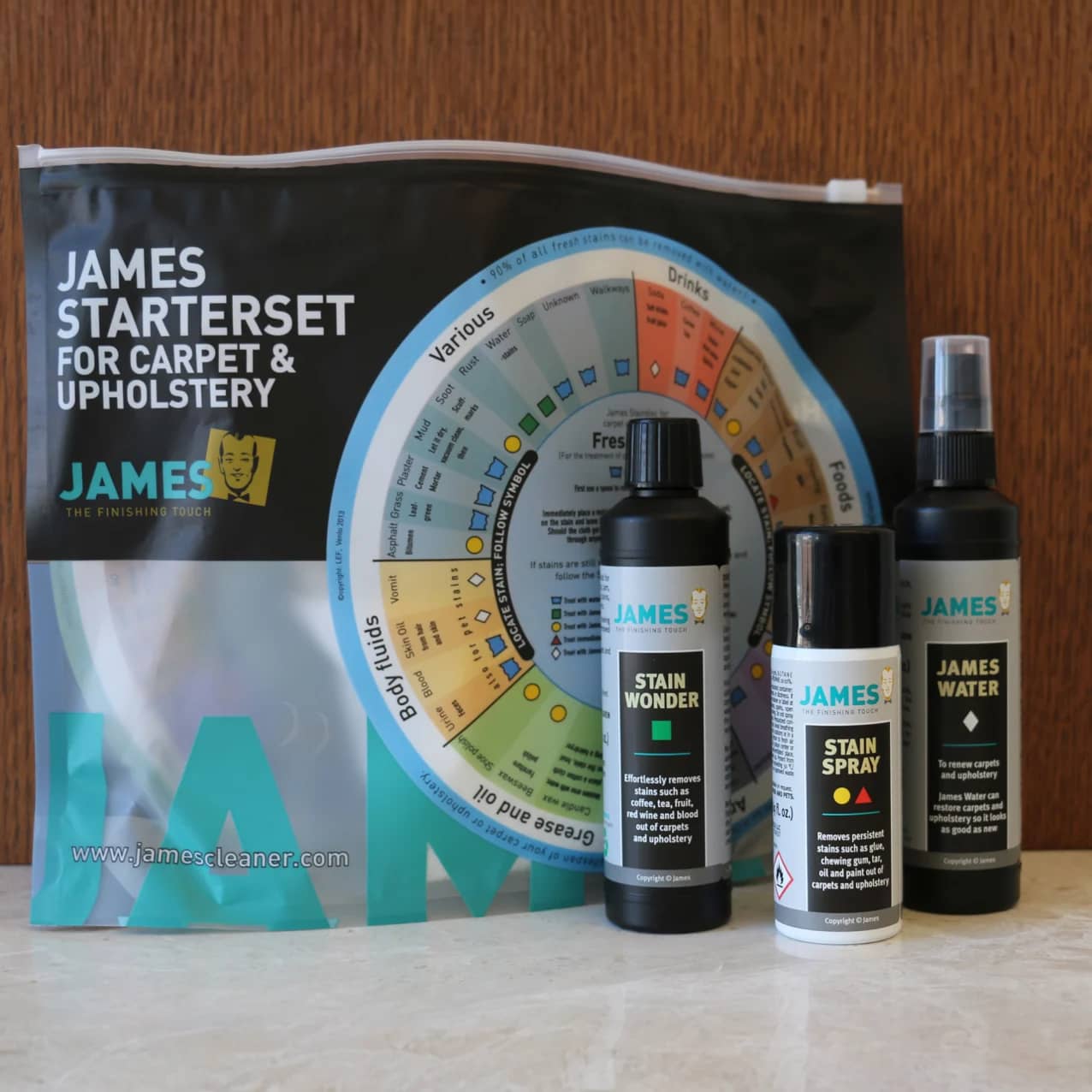Rug Care & Cleaning Tips
From muddy boots to dirty paws, we have the info you need to keep your rug or carpet looking clean and lasting long.
Below, we share our decades of expertise on how to clean your rug or carpet and keep it clean. Plus, find videos & stain charts that help you brave life's little accidents.
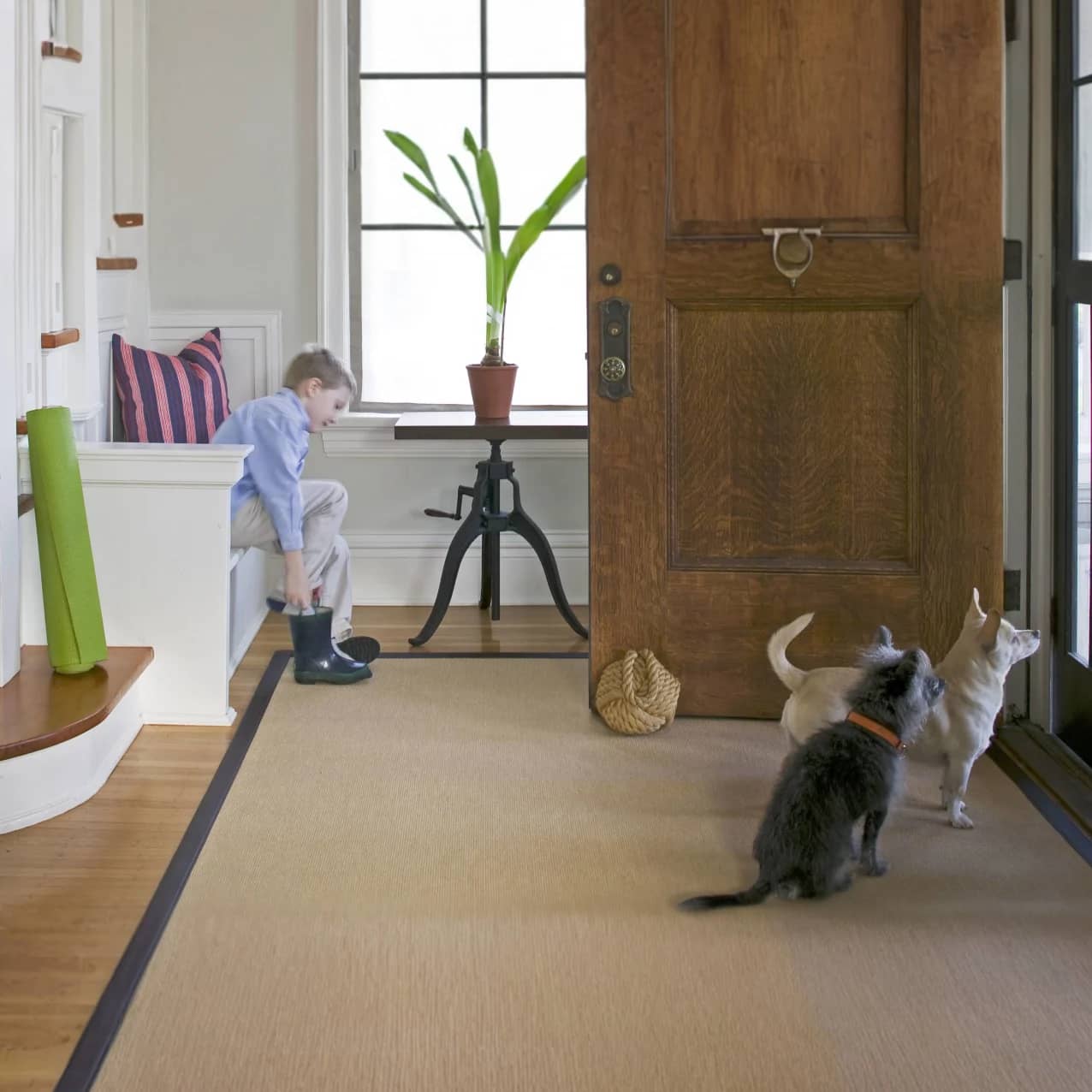
How can I keep my rug looking great?
Walk Off Mat
A sturdy, coarse walk-off mat upon entry to your home is your first line of defense. The goal is to remove as much outside dirt as possible from shoes before they enter your home. Clean your walk-off mats or door mats regularly.
No Shoes in the House
Consider a “no shoes in the house” policy. Shoes come into contact with toxins, bacteria, and soil while wandering the outside world. Keep that stuff out of your living spaces and your house a bit cleaner by leaving shoes at the front door.
Vacuum
Regular vacuuming is your best friend. Fine dirt particles that lodge between the fibers cause additional wear and can rise to surface when exposed to liquids, creating a stain. For best results, vacuum 1-2 times a week and use a vacuum with strong suction and brush attachment. A beater bar is not recommended. If you have a beater bar, please set it on the highest vertical setting.
Routine Professional Cleaning
We recommend a professional cleaning every 1-2 years. Take the time to research a reliable cleaning company who specializes in your rug or carpet's material. Natural fiber rugs require a dry cleaning process, whereas steam-cleaning may be appropriate for some wool carpets. Talk to your professional carpet cleaner about the best method for your rug or carpet.
Care Guides Included
All of our weaves come with guidelines for care and maintenance to help you care for your purchase and are accessible under the Care & Installation tab on each weave page.
Best Practices For Vacuuming Your Rug
Natural fiber rugs are woven from sisal, jute, seagrass, or coir, and have captivating textures and soothing hues. Because they are natural, special attention is required to keep them looking pristine. Here are our care and cleaning tips for natural fiber rugs:
Natural fiber rugs are inherently absorbent and should not be placed in damp environments or where spills are likely to occur. Please see the Mold & Mildew section for more information.
Vacuum regularly. We recommend vacuuming 1-2 times a week to remove the fine dirt particles that can lead to staining and excess wear.
Remove spills as soon as they are discovered. Immediately blot any liquid with a clean cloth and remove any solids. A liquid spill will act as a magnet to any dirt particles that are in the rug, causing the dirt to rise to the surface. Please see the Spot & Stain Removal section for more information.
Professionally clean as needed with a dry clean system. Never steam clean or wet-shampoo a natural fiber floor covering; these methods can cause shrinkage, discoloration, and/ or staining.
Short, natural fibers from sisal, jute, and seagrass carpet may "sprout" during general handling and normal wear and tear. This is normal. Do not pull at the sprout. Instead, clip sprouts off with sharp scissors in line with the top of the pile. There is no harm in clipping the sprouted fiber—there are two backing layers on your natural fiber rug that support and maintain the integrity of the weave.
Looking for an easy-to-clean alternative to natural fiber rugs? Our exclusive SynSisal® collection provides the natural beauty of sisal but with ease of maintenance.
Not sure which rug material is best for your needs? Our Rug Materials Comparison Chart is a great resource. For a deep dive, check out our post Rug Buying Guide: Everything You Need To Know.
Wool is the quintessential material for carpet and rugs: durable, insulating, stain-resistant, renewable, and dyeable. The same lanolin and oils that keep sheep warm and dry in the cold rain give the wool fibers a natural stain resistance. Nonetheless, care should be taken to protect your investment. Here are our care and cleaning tips for wool rugs:
Vacuum regularly. We recommend vacuuming 1-2 times a week to remove the fine dirt particles that can lead to staining and excess wear. A suction-only canister vacuum is best to prevent excess pilling, fuzzing, and pulls. However, if this type is not available, set your vacuum so that the brush is furthest away from the surface of the carpet.
Shedding is a normal part of a wool rug’s lifecycle and does not indicate a defect. Not all wool fibers are exactly the same size and length, so smaller strands can become loose and shed. When your wool carpet or rug is new, consider gently vacuuming it without the beater bar or even sweeping the rug frequently to help clean up the loose fibers. Shedding of wool fibers in new rugs typically settles down in about 6 months.
Remove spills as soon as they are discovered. Immediately blot any liquid with a clean cloth and remove any solids. A liquid spill will act as a magnet to any dirt particles that are in the rug, causing the dirt to rise to the surface. If you need to spot clean your wool rug or carpet, please see the Spot & Stain Removal section for more information.
Professionally clean as needed. Do not apply stain-repellent treatments that contain silicone because they tend to accelerate carpet soiling. We highly recommend finding a cleaner who is experienced at cleaning wool carpets.
Dry cleaning systems such as Capture®, Host®, Dri-Mate®, Wool Clean by Wools of New Zealand, and Chem-Dry are recommended. Truck-Mounted steam cleaning extraction is acceptable for tackless wall-to-wall wool carpet installations. We do not recommend steam cleaning for loose lay wool rugs nor do we recommend any portable units (Bonnet systems, Rug Doctor, etc.).
Synthetic rugs and carpet are made from materials like nylon, polypropylene, ECONYL®, woven vinyl, poly silk, PET, and polyester, and are known for their versatility, durability, and cleanability. Specific cleaning instructions may vary by material, so consult the care guidelines available for your particular rug or carpet. Here are our care and cleaning tips for synthetic rugs:
Frequent vacuuming is a carpet’s best friend. In most cases, a suction-only canister vacuum is best to prevent excess pilling and fuzzing. However, if this type is not available, adjust your vacuum so that the brush is furthest away from the surface of the carpet.
Remove spills as soon as they are discovered. Immediately blot any liquid with a clean cloth and remove any solids. A liquid spill will act as a magnet to any dirt particles that are in the rug, causing the dirt to rise to the surface. Please see the Spot & Stain Removal section for more information.
Polypropylene is an oleophilic material and therefore attracts oily substances. Do not use solvents containing oils for cleaning. More care and cleaning guidelines are available for polypropylene rugs under the Care & Installation tab for each weave.
Professionally clean annually. Do not apply stain-repellent treatments that contain silicone because they tend to accelerate carpet soiling. Dry cleaning systems such as Capture®, Host®, Dri-Mate®, Wool Clean by Wools of New Zealand, and Chem-Dry are recommended.
Looking for an easy-to-clean synthetic rug made from regenerated nylon? Our exclusive SynSisal® collection provides all the beauty of a natural sisal rug but with incredible ease of maintenance.
Tending To A Spill On Your Rug
One of the most crucial areas of rug and carpet maintenance is prompt removal of spills and spots. A liquid spill, even if it's only water, will act as a magnet to any dirt particles that are in the rug. Acting quickly when anything is spilled or dropped and always having the necessary cleaning materials on hand are of the utmost importance.
Please Note:
All our weaves come with cleaning guidelines that are specific to the material or fiber type that are accessible from the Care & Installation tab on each weave page. Please reference these specific guidelines for unique stain treatment tips before attempting the basic guidelines presented below.
All cleaning agents and solvents should be Ph neutral.
Pretest any spot-removal treatment in an inconspicuous area to confirm compatibility with your fiber type and verify that discoloration does not occur.
Here are our guidelines for treating spills, spots, and stains:
Immediately blot (DO NOT RUB) spills with white paper towels or clean absorbent cloth. Scoop up solids using a spoon, working from the outside of the spill towards the center.
Apply the cleaning agent listed on the spot removal chart (below) to an absorbent towel and begin to blot up the spill, working inward from the edge of the spot to prevent excess spreading. Flip the cloth to prevent reapplying soil.
Do NOT oversaturate with water or liquid.
Wait a few minutes for the cleaning agent to work on the spot.
Once the cleaning agent has removed the spot, blot excessive moisture by applying pressure with paper towels or a dry absorbent cloth.
Rinse with clear water applied to a clean cloth (do not apply water directly to the rug).
Remove excess moisture by applying pressure with paper towels.
Refer to the Spot Removal Chart below for further guidelines.
Spot Removal Chart Information
Solvent = HOST Spot Remover, or any other commercial dry cleaning solvent
Detergent = 1 teaspoon laundry detergent (without bleach) & 1 cup lukewarm water
Vinegar = 1/4 cup white vinegar & 1/4 cup water
Ammonia = 1 teaspoon clear household ammonia and 1/2 cup water
A = Use HOST, Capture or other commercial grade dry cleaner for carpets
B = Solvent, blot, detergent, blot, water, blot
C = Detergent, blot, ammonia, blot, detergent, blot, water, blot
D = Detergent, blot, vinegar, blot, detergent, blot, water, blot
E = Detergent, blot, ammonia, blot, vinegar, blot, detergent, blot, water, blot
F = Detergent, blot, ammonia, blot, water, blot, solvent, blot
G = Freeze with ice cube, shatter with blunt object, vacuum, solvent, blot (for wax, place paper over wax, iron with warm - not hot - iron to absorb)
H = Blot as much as possible, cool water, blot, mild detergent, blot
I = Acetone polish remover, blot, repeat
J = Mild detergent solution, blot, methylated mineral spirits or turpentine, blot
Spot Removal Chart
Type of Spill | Remedy | Type of Spill | Remedy |
|---|---|---|---|
Beer or Liquor | A or D | Ketchup | A or C |
Blood | A or D | Lipstick | A or B |
Butter | A or D | Mascara | A or B |
Candy | A or E | Mayonnaise | A or C |
Coffee | A or E | Milk | A and E |
Chocolate | A or D | Nail Polish | I and A |
Crayon | B and A | Oil (cooking) | A or B |
Egg | A or C | Oil (furniture) | A or B |
Feces | A or C | Paint (latex) | A or F |
Food Coloring | C and A | Paint (oil base) | A or B |
Fruit Juice | A or E | Rust | A |
Furniture Polish | A or C | Shoe Polish | A or B |
Glue (model) | I | Soft Drinks | A or E |
Gravy | A or E | Tar | A and B |
Gum | A or G | Tea | A or D |
Hair Spray | A or B | Urine | A or E |
Hand Lotion | A or B | Vomit | A or B |
Ice Cream | A or E | Wax | G |
Ink | A or B | Watercolors | A or f |
Wine | A or E |
Exposure to the elements and changes in humidity levels can potentially create an environment for the growth of mold or mildew. Do not place your natural fiber rug anywhere that is damp or where spills are likely to occur. Seagrass is especially susceptible to mold and mildew growth. Mold and mildew spots may not respond to the cleaning procedures that work with other types of soil, but we strongly recommend that you try a dry carpet cleaning kit like Host or Capture (widely available online).
If that does not work, or if the mold is on a seagrass rug, thoroughly mix one part liquid chlorine bleach with six parts water in a spray bottle.
Test the mixture by spraying a little in a corner of the rug (not on the binding).
If bleaching occurs, dilute the solution and re-test until it is safe to use.
Mist the solution lightly on the moldy area, using a soft brush to work it down into the weave to reach all the mold growth.
After five or ten minutes rub the area with a clean, dry cloth. Repeat if necessary.
When you are finished, be certain that the rug dries thoroughly within five or six hours, using a hair dryer on the damp spot if required.
If mold or mildew persists, your setting is probably too humid for the use of your rug. The rug may be permanently damaged; we recommend prompt removal and replacement with another material.
For routine maintenance of our woven fabric bindings (cotton, linen, jute, etc.), simply vacuum the edge finish as you do the rug. If excessive soiling or spills occur on the binding, a dry extraction cleaning system such as a dry carpet cleaning kit like Host® or Capture® (widely available online) will be very effective. Alternatively, you may use a mild, neutral cleaning solution on spots and small soiled areas, but be sure to test an inconspicuous area first to ensure that the cleaner will not affect the fabric colors. Once you've tested an area, follow these steps:
Blend just a couple drops of liquid dish washing detergent with a quart of warm water and add it to a spray bottle.
Lightly mist a small amount of solution on the spot; do not saturate the area.
Blot with a clean cloth.
Do not allow the area to stay wet for more than a few hours.
If it is not drying by itself, apply heat with a hair dryer.
To maintain leather bindings, simply wipe the surface with a damp cloth or sponge.
Care & Cleaning Accessories
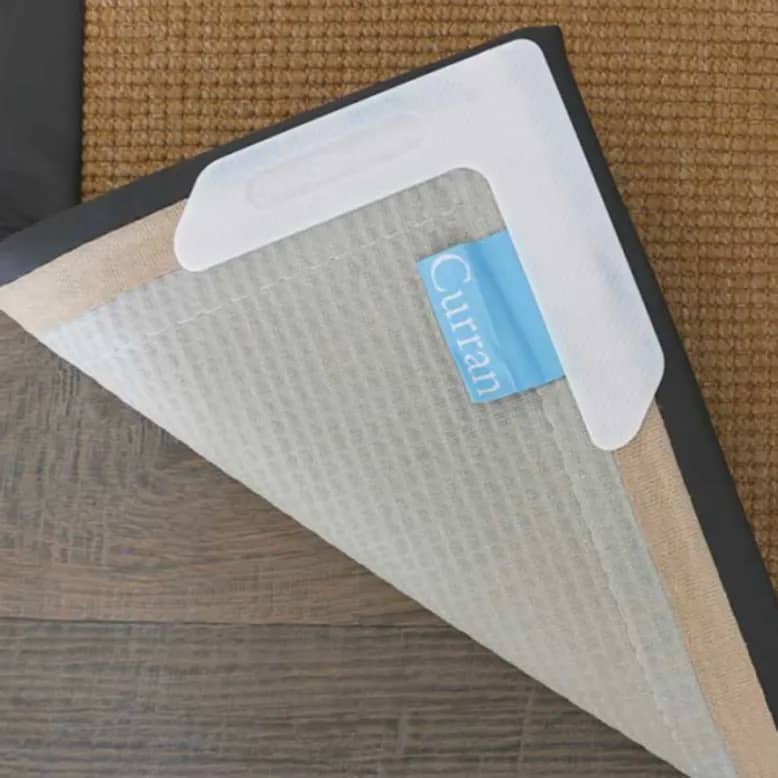
Curl Stop
Curl Stop is a unique anti-rug curling product that attaches to the underside of your rug corners (not your floor) and keeps the rug corners flat. Curled corners are a tripping hazard and increase wear and tear on your rug.
Installation is quick and easy. Simply un-peel the backing sticker and adhere on the underside corners of your rug.
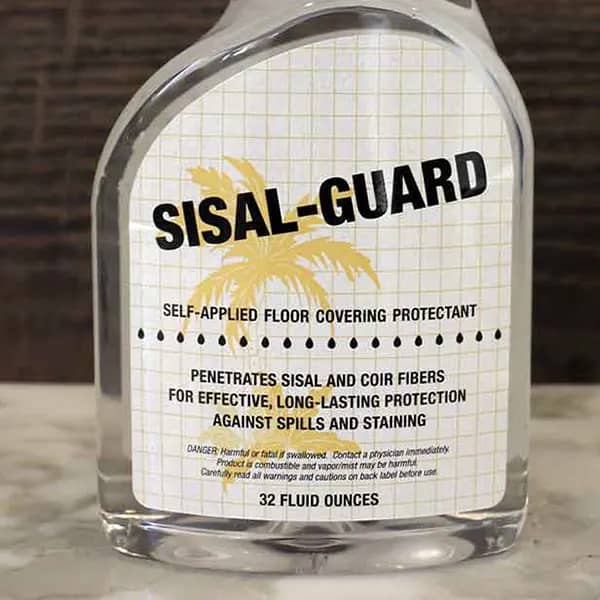
Sisal-Guard
Sisal Guard is a spray-on sealant for natural fiber rugs that acts as a barrier, reducing the rate at which sisal absorbs liquid. Applying Sisal Guard will NOT guarantee that your sisal will never stain, but it will reduce the chances of a stain if a spill occurs.
A single one-quart bottle covers approximately 10-15 square yards. Please note: Sisal Guard is only available for ground shipment within the continental U.S.
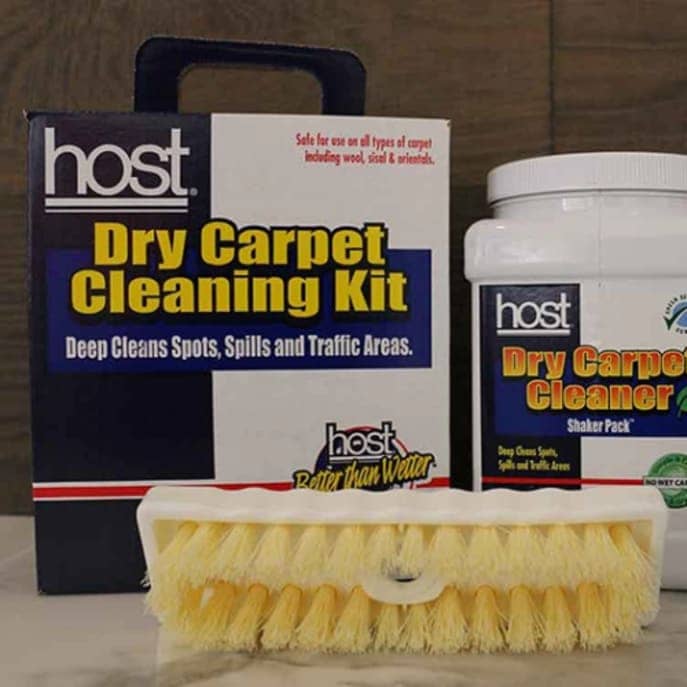
Dry Cleaning Kit
Dry Carpet Cleaning kits work by using a highly absorbent powder moistened with water, detergent, and a small amount of solvent. The sponging action of the cleaner dissolves and absorbs soil and spots, which can then be removed by vacuuming.
HOST Dry Carpet Cleaning Kit and Capture Carpet & Rug Dry Cleaning Kit are widely available online.
